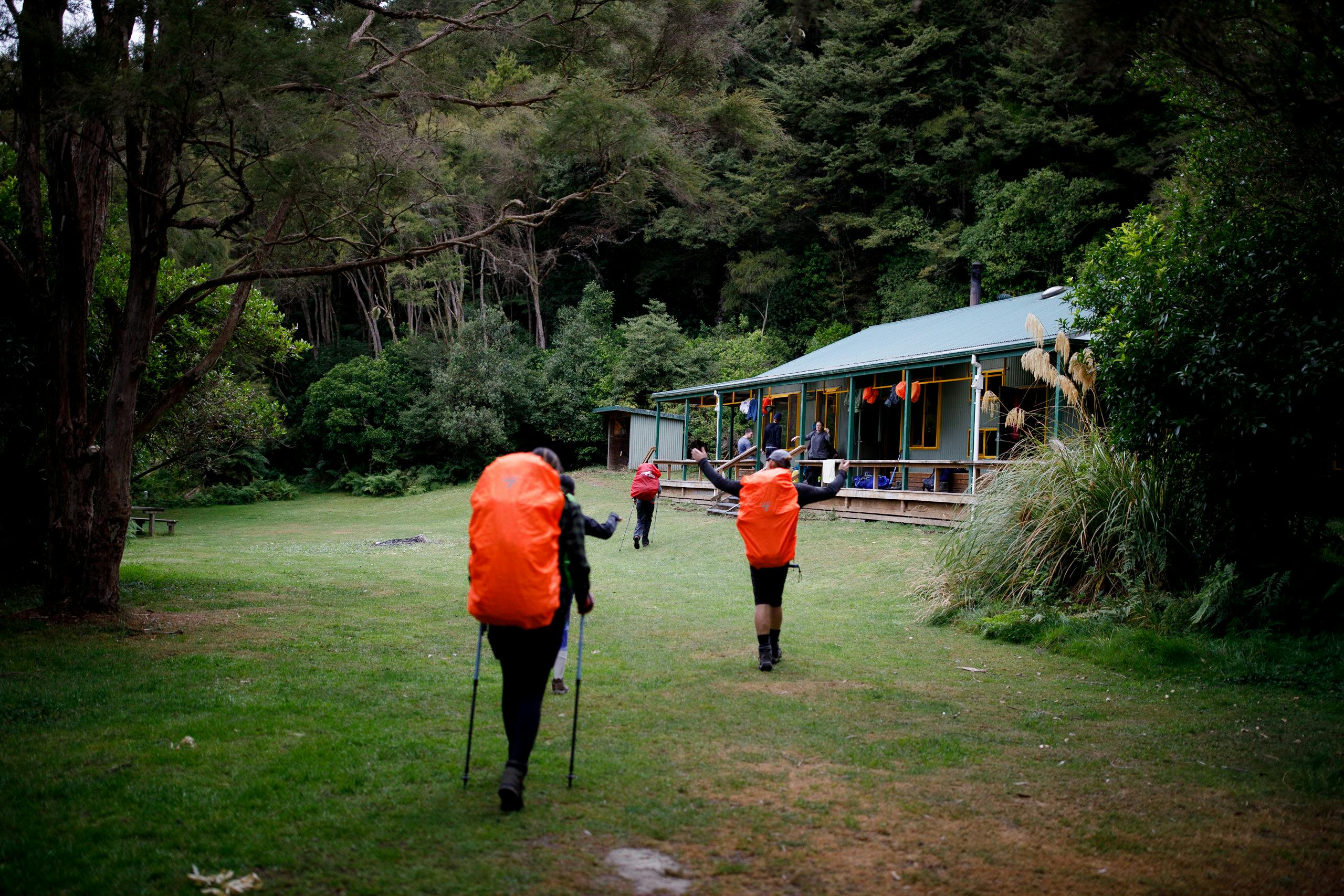It’s much easier to keep going happily when you know how much longer there is to go.
Estimating how long it will take to reach a destination is a vital part of trip planning. It helps you decide what time you should leave and whether your group is fit enough to do the trip.
During the trip, you can gauge how well the group is going and you may decide to turn back or change your plan if it is taking too long.
Estimating times is also a useful navigation aid. If you expect to come to a landmark in 10 minutes, you may consider what has gone wrong if you haven’t reached it in 15 minutes.
It is commonly noted by trampers that DOC signs and published estimated times are inconsistent, sometimes longer or shorter than expected. This is due to differences in the way the times are calculated and the huge differences in walking speed. It is much better to learn your own speed and calculate estimated travel times based on this.
While learning, it is safest to overestimate the time it will take; it is better to expect to reach a hut at 5pm and get there at 4pm, than vice versa.
Most people carrying a pack on a well-formed, mostly flat track will walk at 3-5km/h. My observation is people of average fitness who don’t often tramp are more likely to go 3km/h. Unless you are particularly fit or unfit, this is a good starting point even if it is a bit of an overestimate. It is also easy to calculate, as it divides neatly into 20-minute kilometres.
Because tracks are rarely flat, calculations need to be adjusted for contours. A good estimate is to add four-minutes per contour line (20m) you ascend and three-minutes per contour line you descend. Don’t forget to add rest breaks and lunch breaks into your plan – a 10-minute rest each hour, not counting the last hour when you reach your destination.
Putting it into practise
Imagine you are doing a loop track of 10km with a 120m (six contour) ascent and descent. Using these figures, an estimate of your walking time will be:
20min/km x 10km = 200min.
4min per contour ascent x 6 contours = 24min
3min per contour descent x 6 contours = 18min
This totals 242min or around 4hr, plus 30min of breaks.
Of course, it will take longer if the track is rough or less time if you have a day pack rather than an overnight pack. Consider how you travel – do you stop for views and photos or do you plod on with few stops? Don’t forget to adjust the calculation if you are fit (eg 4km/hour), or unfit (eg. 2.5 or 2km/h).
Practise the technique and adjust according to your own speeds. It will become easier and more reliable the more you use it.
– Heather Grady is an instructor with Outdoor Training New Zealand








